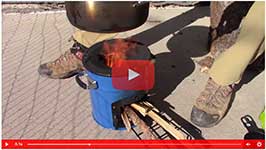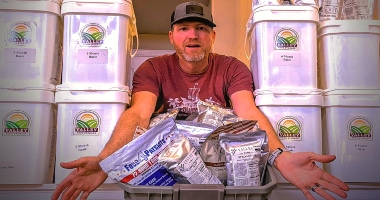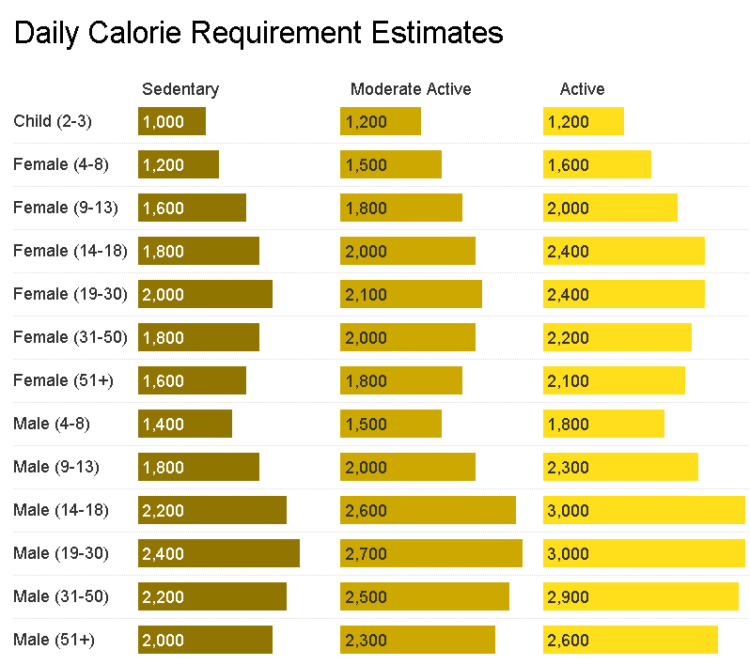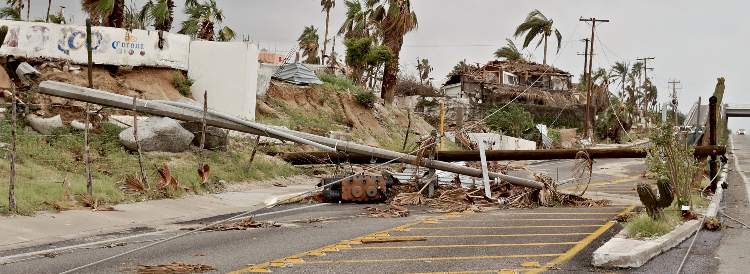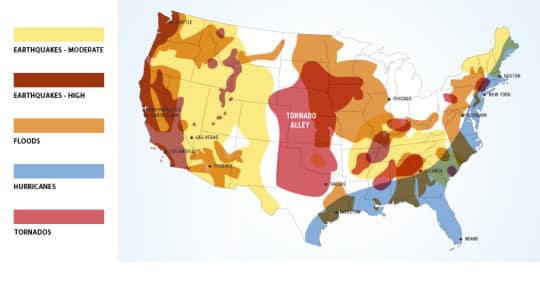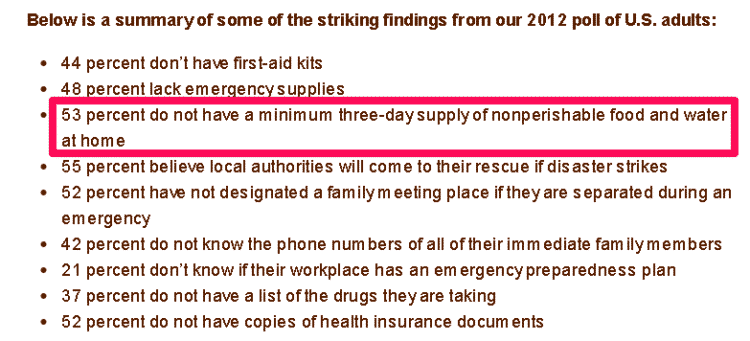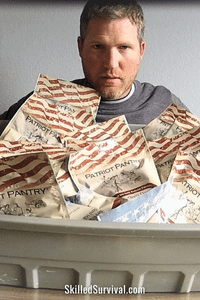
You see, I’ve been helping people prepare since 2013…
And THIS is one of the biggest questions I get asked…
How Much Food Should I Be Stockpiling?
So, let’s roll up our sleeves and figure this out once and for all!
TOPICS IN THIS GUIDE… ↓(click to jump)
- How Much Do You Currently Have?
- How Many Calories Per Day?
- How To Calculate Your Totals
- How Much Food Should I Have?
- Common Food Stockpiling Amount Myths
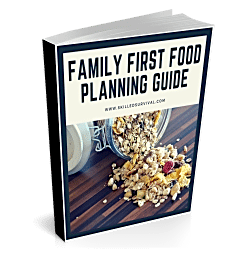
Want a free family-first food planning guide?
Enter your email below to instantly download this Complete Guide PDF. No purchase necessary. 👇 👇How Much Emergency Food Supply Do You Currently Have?
Calculating How Long Your Food Stockpile Will Last
To get the total number of days your stockpile will last, you need to take the:
Total calories in your stockpile ÷ Calories your family needs per day
Let’s start with the top half of the equation.
Calculating How Many Calories You Have
Ideally, your pantry is well organized, making the process much faster.
But if it’s not…perhaps this will allow you to do so…?!?
Because you’re about to take inventory.
Yup. Just like ALL successful retail businesses do regularly.
Now you may ask, “Should I count EVERYTHING” on my shelves?
If it’s shelf stable and you replace it regularly, then YES, count it.
Sure, some items will fluctuate as you use them up and then buy more.
But a snapshot of the shelf life stable calories in your pantry is “close enough” …
Obviously count all freeze-dried foods, MREs, canned meats, and #10 Cans.
Also, don’t count ANY calories in your refrigerator or freezer.
Power outages make freezers highly vulnerable disaster appliances.
The only exception is if you have a robust backup energy plan or you are already living off the grid.
A robust backup energy plan means having a Power station (or a generator with a few weeks of fuel).
Otherwise, I DON’T count your refrigerated and frozen goods.
I used a simple spreadsheet for this to help make the calculations easy. Plus, I can sort and filter as needed later with a spreadsheet.
Start by making a few columns titled:
- Food – Brand
- Number of items (pouches, bags, containers)
- Servings Per Container
- Calories per Serving
- Total Calories
Once you fill out an entire row with that info, multiply the “number of items” by the “servings per container” by the “calories per serving.”
This will give you the number of calories you have in your inventory for THAT specific food item.
Now, you need to be careful here.
I added the Brand to the first column because not ALL brands use the same servings/calorie info.
For example:
Separate Brands of canned beans may seem identical but often are not.
The difference can add up, especially if you have a lot of dried beans…
Now, IF the foods are the same, AND the info per serving is the same, you can put them in the same line.
Otherwise, if any of those numbers are different, add a new line item.
Now keep going and inventory everything that makes sense for you.
Once done, you should add up all the calories.
And now you know exactly how much non-perishable food you currently have.
This calorie number may seem massive if you’ve got a decent-sized stockpile.
Perhaps even a few hundred thousand calories, like 358,753 or something like that.
WOW. Massive, right? Not so fast…
Having your total calories may seem like an important number to know, but it’s not all that helpful…yet.
Why? Because it’s relative to the size of your family, right?
For example, 358,753 calories is a stellar long term food storage for a retired couple of 2.
But what about a growing family of 5? Not so much.
That’s why we need to figure out how many calories YOUR family consumes each day…
How Many Calories Does Your Family Need Per Day?
At first, this may seem like a difficult task, but with the proper tools, it’s easy.
You must figure out how many replacement calories each family member needs daily.
- And this is NOT the same for males and females.
- It’s also NOT the same for babies, kids, young adults, adults, or mature adults.
- And it’s NOT the same for those who live an active or sedentary lifestyle.
You need to consider ALL 3 of these variables to make an educated guess.
The good news is I created a simple chart to do just THAT.
You can use this chart to determine your sex, age, and activity level for each family member.
Then add up each number.
The TOTAL is how many calories you’re family needs per day.
Now, THIS is a very good number to know!
This is the number you need to figure out how long your food stockpile will last.
Your Final Calculation
Take your total calories and divide by your family’s daily calorie requirement.
Viola! THAT new number is a very good approximation of How Long Your Current Food Stockpile Will Last.
Perhaps your number is 58.63 days?
That means you’re very close to having 2 months’ worth of food in your emergency stockpile.
Now, of course, you may be able to ration those calories a bit in a longer-term emergency.
But I don’t recommend “rationing” your calculation.
Why? Because I’d rather underestimate the duration of my stockpile by a few days and NOT the other way around.
Said another way, I’d rather be pleasantly surprised…
You now know how long you have before starvation begins after the grocery store shelves go bare.
We can now finally circle back around to the original question:
How Much Emergency Food Should I Have?
Ok, are you ready for YOUR answer? Do you have a pen and paper ready?
A minimum of 2 weeks and a maximum of 1 year…
I can hear you booing at me already…
You were probably hoping for something a bit more specific, weren’t you…
Like most things, everyone’s situation, risk tolerance, and resources vary.
I can hardly give a more specific answer for everyone.
But I CAN do better than THAT.
So let’s break things down into a few different categories.
Only then can we zero in on something more meaningful.
Here are a few categories:
- Those ONLY Worry About High-Frequency, Short Term Natural Disasters
- Those Who Worry About Medium Term Disasters (natural and/or manmade)
- Those Worried About an Extensive Lawless, SHTF Type Event…
1. Those Worried About Shorter-Term Natural Disasters
Some folks are mainly concerned with short-term natural disasters.
They don’t accept that the world is becoming less stable and more uncertain by the day.
They deny the risk of major societal upheavals is rising.
That’s NOT me, but hey, perhaps that’s you.
Well, in this case, you need to get 2 weeks’ worth of survival food in place.
That’s the bare minimum, in my opinion.
Any less, and you’re not living up to your primary adult responsibilities.
I recommend 2 weeks as the first target for 2 reasons:
- It’s meaningful – gives you a basic level of resiliency
- It’s achievable – everyone can hit this mark in a short period of time
Sure, some folks will scoff at only 2 weeks of emergency food.
But it’s actually a solid start, good for MOST likely emergencies we’ll all encounter year in and year out.
And it’s way more resilient than MOST people…
53% of Americans admit to having less than 3 days’ worth of nonperishable food and water.
That’s gross negligence!
Sorry but if you have only 2 or 3 days of short term food, you’re completely fragile.
You’re dependent on handouts in a crisis.
This is unacceptable and irresponsible.
↓ The Surprising Reason People Live A Fragile Life
So, get 2 weeks, and then I’ll stop the name-calling…
And perhaps I can encourage you to shoot for a month.
A month is so much more resilient than 2 weeks.
At a month’s worth, you’ll be able to ride out 99.9% of natural disasters.
And you’ll also have a bit of extra resiliency to civil unrest, chaos, famines, etc.
2. Those Worried About Medium-Term SHTF Disasters
Ok, this category is for those who don’t feel like 1 month is enough,
But also think a SHTF-type event way worse than the recent pandemic is zero…
I mean, the more widespread and the longer the emergency crisis, the LESS likely it is to occur, right?
It’s simple statistics.
Yet, I believe there’s a greater than zero chance we do have a SHTF event in our lifetimes.
Why? Because the world is getting more vulnerable as:
- technology advances at a breakneck pace
- the world becomes more and more interconnected.
So, what’s “reasonable” for someone who sits between the two extremes?
I recommend somewhere between 3 and 6 months.
That solid supply of calories will keep you fed for ALL but the most unlikely doomsday events.
3. Those Worried About a Worst Case-SHTF Type Event…
Well, here we are…the resilient few.
Those of us who think there’s a non-zero chance of life as we know it coming to an end in our lifetimes.
↓ America’s Biggest Threats In 2023 (and Beyond)
We tend to see our emergency food stockpiles as cheap self-insurance.
A policy you own that lasts up to 25 or 30 years if done right.
So why not go big and sleep really well at night, even as the world continues to crumble?
To enter this realm, you’ll be targeting at least 1’ year’s worth of emergency food…
Now perhaps we’re NOT there yet, but that’s ok; 1 year is an excellent goal.
You can do more if you’d like, heck, 2 years if you’re really dedicated.
But after you hit 1 year, your time and energy are better spent elsewhere.
At that point, I recommend focusing on skills to bring more calories into your storerooms.
I’m talking about:
- Canning, Gardening & Seed Saving
- Foraging and Gathering
- Hunting & Fishing
- Farming & Raising Farm Animals (chickens, rabbits, goats, etc.)
- Aquaponics
These more advanced prepping techniques.
Why? Because they not only give you a runway should grocery store foods go bare.
They extend your calorie runway into the future.
If all you do is stockpile (without adding any new calories), then your time to starvation is on a countdown clock.
You keep adding calories back into your stockpiles.
This helps to extend that time to starvation even longer into the future.
If you ever get to more calories in than out, you’ll never starve, right?
Dispelling The 5 Most Common Stockpiling Amount Myths
I’ve heard a lot of misconceptions about this topic.
Let’s set the record straight:
Myth #1: “I only need a month’s supply.”
A one-month stockpile just won’t cut it.
Emergencies can last longer than that, and you don’t want to be caught with empty shelves.
Aim for at least three to six months’ worth of food to be truly prepared.
Myth #2: “Canned goods will last forever.”
While canned foods have a long shelf life, they don’t last indefinitely.
Over time, the quality and nutritional value can degrade.
Rotate your canned goods regularly and check expiration dates to ensure you have fresh supplies.
Myth #3: “I’ll survive on MREs and freeze-dried meals.”
While these are convenient options, relying solely on MREs and freeze-dried meals can get expensive and monotonous.
Diversify your stockpile with staples like rice, beans, and pasta to create a balanced and sustainable food reserve.
Myth #4: “I’ll catch or hunt for food during an emergency.”
Hunting and fishing can be great survival skills, but they’re not guaranteed sources of food.
Wildlife can be scarce, and fishing might not yield results every time.
Stockpile food as your primary source and use hunting and fishing as supplementary options.
Myth #5: “I’ll just grow my own food.”
Gardening is a valuable skill, but it takes time and effort to yield a significant harvest.
Plus, it’s season-dependent.
Don’t rely solely on your
Final Thoughts
Everyone reading this needs to build a stockpile a food (and gallon of water) that will last at least 2 weeks
No excuses!
Once you get there, I recommend you keep building for up to 1 month.
And if you want even more protection, try to get to the 3 – 6 months window.
Or perhaps you want lots of food security.
A nice long runway to give you ample time to let the post-modern world sort itself out – then go with 1 year.
After that, move to advanced skills such as farming, raising animals, aquaponics, etc.
Ok, if you’re ready to get started, you should check out my review of Valley Food Storage or watch the video below:
↓ Valley Food Storage Review
Remember, folks, it’s better to have more food than you need than to come up short during an emergency.
Plan and prepare for the unexpected, and you’ll have peace of mind knowing your family is well-fed.

Prepare, Adapt & Overcome,
P.s. - I just found out 2 out of 3 Americans don’t feel prepared for a 3 day disaster!!!
I guess this goes to show how modern society continues to embrace ‘living a fragile life.’ What’s crazy is… it’s so easy to fix.
To make sure YOU have the basics, watch our FREE training on “10 Simple Steps To Basic Preparedness” that shows you HOW.
Nothing crazy here… this isn’t doomsday prepping... just the basics every responsible adult should have before a disaster strikes.Why You Can Trust Skilled Survival...
Go here now to review a full breakdown of:
- Who We Are
- Our Credentials
- Our Mission
- & Product Recommendations...
Here are a few highlights of our teams credentials & certifications:
- Certified Member of a Mountain Search & Rescue Organization
- Plant Emergency & Safety Leader for a Major Food Manufacturer
- Member of the 10TH Mountain Division Hut Association
- Certifications: Avalanche 1, WFR, CPR
- Official Gear Tester for Numerous Outdoor Gear Companies
- Countless Multiday Backpacking trips into Remote Wilderness
- Bachelor's Degree In Mechanical Engineering
- Bachelor's Degree In Civil Engineering
- Bachelor's Degree In Biomedical Engineering
"It takes 20 years to build a reputation and five minutes to ruin it." - Warren Buffett
We're fully aware that trust is NOT something you GET but is EARNED.
And we'll continue to earn YOUR trust through our forthright and honest approach with each new Blog Post, Guide & Product we create...
P.s - I just took this FREE 60-second 'Readiness Score Quiz'👇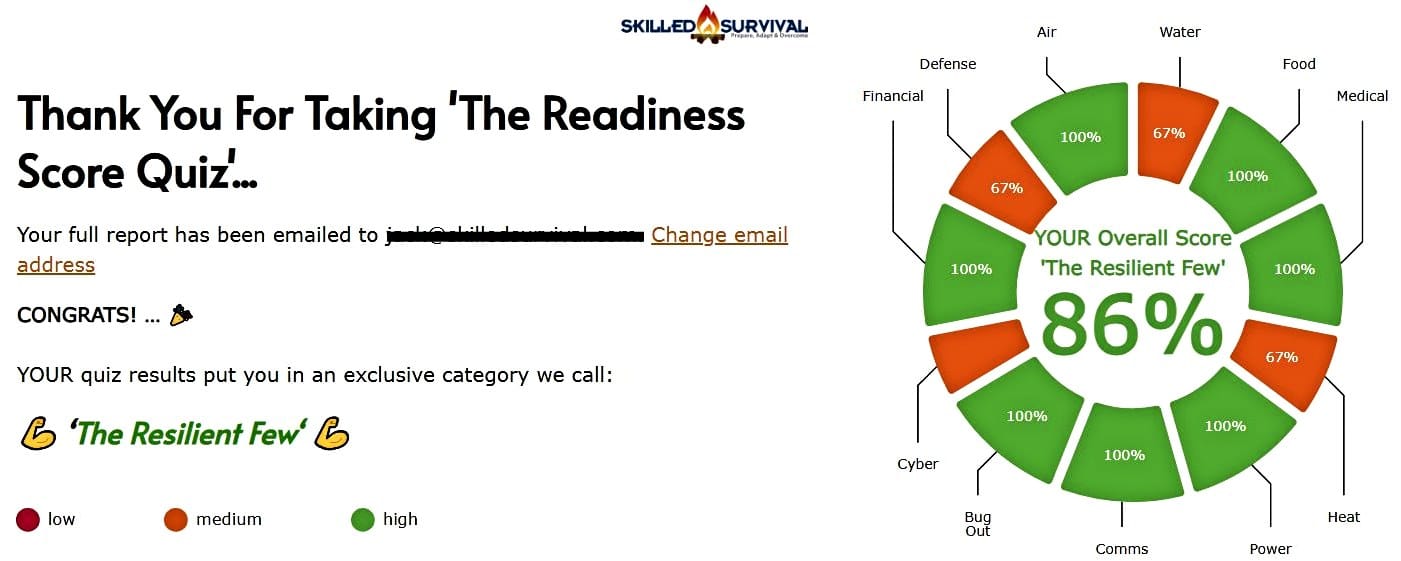
AND... I've still got a few gaps in my preps...🤔 But at least, I'm not part of 'The Fragile Masses'. 👍 Find out where YOU stand by answering a few questions...
